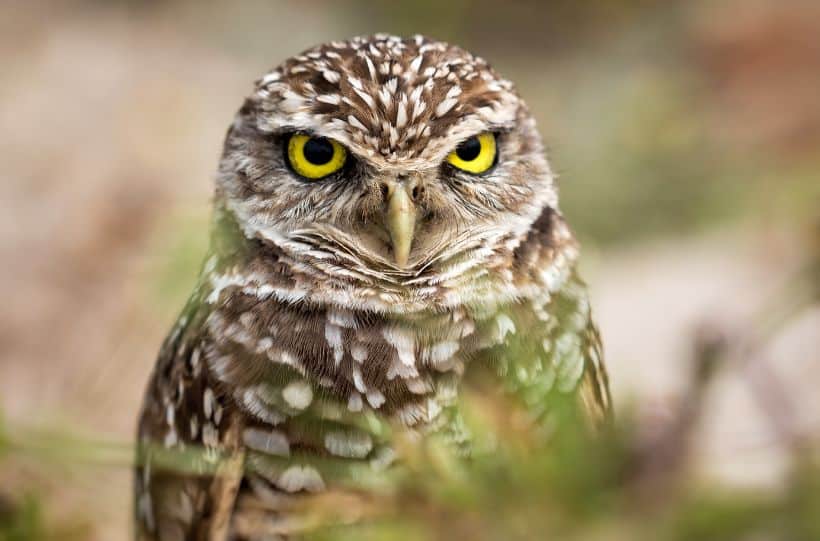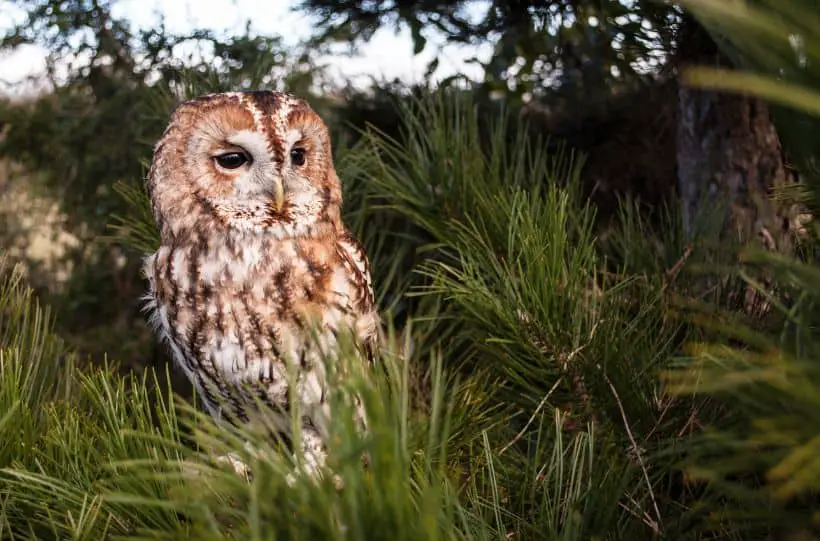How To Attract Owls To Your Backyard
When you think of owls, your mind probably pictures a magnificent bird of prey that’s elusive and hard to spot in the wild. However, like many others, these animals are also creatures of habit.
By providing the right environment, you can attract owls to your backyard to gain a front-row view of them in action.
Owls might not have been your first choice of wild animals to attract into your garden, but, being brilliant hunters, they provide an excellent, natural method of controlling pests.
All owls are birds of prey, which means they survive solely on a carnivorous diet. Depending upon the species of owl and size, they hunt for a variety of pests such as squirrels, rodents, reptiles, and insects,
However, as most species are nocturnal, they don’t interfere with regular wanted visitors to your garden such as pollinators and birds.
If you want to learn how to attract owls to your backyard, keep on reading to find out.

Natural Ways To Attract Owls To Your Backyard
Attract Prey Animals
First and foremost, if you are wanting to attract a predator to your garden, you need to ensure there is food for them to eat. Without any prey, owls won’t be able to survive and won’t stick around long in your backyard.
Contrary to your gardening instincts, you need to make your garden attractive to rodents, squirrels, and even small rabbits. These are all animals that an owl would naturally hunt in the wild.
If you are prepared to, leave an area of your garden to grow naturally. This wilder terrain will attract prey, increasing your chances of attracting owls too.
Once the owls have learned that there is food in your garden to hunt, they’ll take care of the pests for you so you won’t have to worry about them.
Avoid Pesticides and Poison
Pesticides and poison although often effective, are extremely deadly to wildlife. These chemicals are used to kill pests from bugs to rats.
Not only would they kill an owl’s prey, but if an owl consumes an animal that has died from pesticides or poison, these same chemicals will also pass through to the owl and be deadly to them too.
If you do find yourself experiencing more pests than a local owl population can control, try to use natural methods that won’t harm local wildlife. For example, you can attract more predators e.g. ladybirds for aphids, create plant barriers in your vegetable garden e.g. by planting nasturtiums, or planting strong scented crops e.g. mint or garlic.
Reduce Outdoor Lights
Most owls are nocturnal and hunt at night with their exceptional eyesight and hearing. With this in mind, it’s important to minimize using outdoor lighting in your backyard as this will deter owls from hunting in your garden.
Owls hunt more effectively in darkness, relying on it to provide them with camouflage to avoid being spotted by prey.
Keep Pets Inside At Night
Owls are not selective hunters and will not distinguish between an unwanted garden pest and your beloved pets. If it’s light enough to carry, it’s food.
As most species hunt at night time, your pets are safe during the day in your garden. But at nighttime, particularly if you have a small rabbit, cat, or even dog, it is best to keep them inside.
If you do have a larger pet, it is still important to keep them inside at night. Owls will be deterred from visiting your garden if there is lots of noise present.
Provide Shelter
Owls like areas that are densely covered. Large trees with wide, stable branches offering shade and safe spaces to perch during the day are ideal.
These areas provide not only safety from other animals during the day, but also offer shade from the sun.
Build a Nesting Box
Not all owls choose to use nesting boxes, so it is best to see which native species are in your area and where they like to build their nests first. However, nesting boxes are still a good idea to build to attract owls to your backyard.
Adding nesting boxes provides owls with shelter and an opportunity to use it as a safe space for laying their eggs.
To encourage owls to use your nesting box, ensure to build it high up in a tall tree. Place the entrance away from direct wind and sheltered from the elements.
If you are going to use a nesting box, make sure it is ready at the beginning of the year as most owls lay their eggs in January and February.
You also need to monitor them regularly to remove any unwanted pests from taking over the nesting boxes such as wasps, starlings, raccoons, or squirrels.
Water
All animals need water to survive and although owls gain most of their water from their prey, they still sometimes need an additional supply.
Consider adding a bird bath into your garden for owls to wash and drink from. Unlike most daytime birds, owls are often a lot larger and will require a deeper bath so this is something to take into account.
Bird baths can be a particular lifeline during the summer months and in hotter temperatures. Make sure to change the water frequently so that it is fresh and does not attract unwanted flies.
Avoid Owl Recordings
Though it might seem tempting to use recordings of owl calls to attract owls to your back garden, this causes more harm than good.
Like all birds, owls use calls as a way of communicating with different calls providing different meanings.
Using recordings of owl calls could send mixed signals to owls and cause them to display certain behaviors. For example, a local owl may hear the recording and believe there is another owl within its territory.
These recordings can provoke responses from local owls that puts them at risk e.g. focusing on deterring a fake threat instead of tending to their young.
It is really important to avoid using recorded owl calls and focus on natural means of attracting owls to your backyard.

Take a look at our other posts on attracting wildlife into your garden here:
